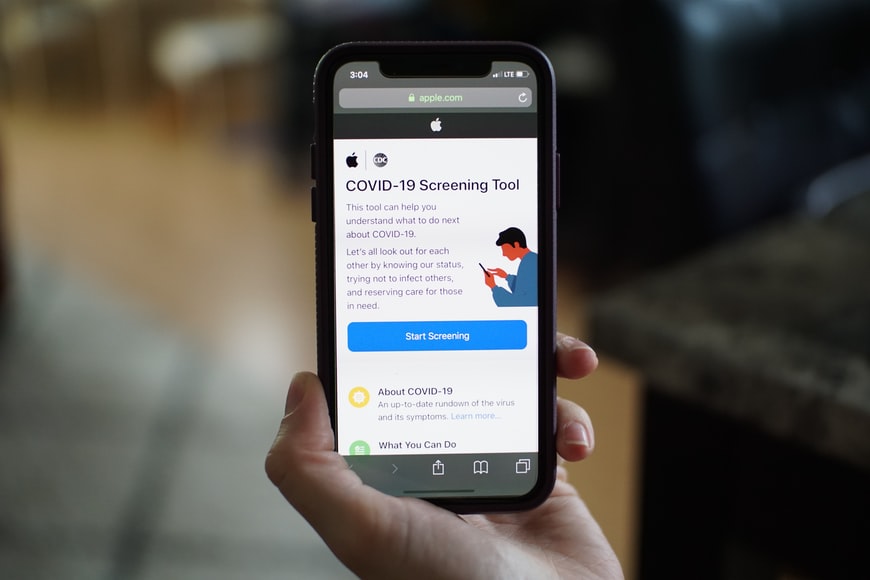Five Ways for Nurses to Prepare Themselves for Telehealth
Many fields saw immense turmoil over the past two years, but none were more affected than healthcare. Healthcare practitioners of all kinds have had to put their lives on the line and work towards finding a solution for a virus they’ve never encountered before.
However, while there have been immense challenges, monumental breakthroughs have also made patient care as comfortable as possible. Telehealth has been a vital innovation in helping healthcare practitioners stay connected to clients who can’t come to clinics for whatever reason.
But there are also specific challenges in implementing this new care protocol. Nurses, in particular, can find the transition awkward as most of their care revolves around developing a deeper connection with clients.
If you’re a nurse looking to prepare yourself for telehealth, keep reading for some useful tips below.
Contents
1. Have an agenda
In-person consultations can be comfortable and usually have a smooth flow, whether meeting with old clients or new ones. Topics can come up naturally, and it can be easy for both the nurse practitioner and the client to discuss whatever they want.
Telehealth, however, removes this vital human aspect and thus can make it harder to have free-flowing discussions. An agenda can help you stay on track and can help you discuss every part of your client’s health.
Having an agenda can be even more critical when working with an older client. These clients can find it harder to adjust to technological healthcare, and having someone who can guide them along the way can be a great help.
You can equip yourself better when handling issues older clients face through advanced education as an adult gerontology nurse,
To prepare yourself for evidence-based interventions and enhance the quality of care for your patients, registering for an AGNP Master’s program would be ideal.
As healthcare evolves, medical institutions require nurses to stay informed about the latest patient care and medical advancements.
2. Be accommodating

Telehealth can be tricky to get the hang of and, for many, can seem like an intrusion into their private space. It essentially takes the meeting to the client’s home, thus reducing the privacy and comfort they may have had when coming to the nurse’s office or clinic.
Although not every client will experience discomfort, it’s important to be accommodating to those who do.
In contrast, not every client has the facility of private space at home to host a telehealth session, and nurses need to recognize their client’s issues. When scheduling sessions, try to pick a time that suits them best to ensure their complete focus throughout the session.
Additionally, inform them beforehand if they need a physical check-up before proceeding. You can also keep yourself updated on recent prescriptions and treatments so that the session goes as smoothly as possible.
Once you prepare your client and reassure them regarding the procedure, they’re likely to experience lesser anxiety.
3. Get some tech support
One of the biggest challenges regarding telehealth sessions is the tech aspect. If you’re using third-party apps for your sessions, you might need to adjust your video conference according to the apps’ regulations.
Therefore, the best-case scenario is to have a dedicated app tailor-made to your needs. If that isn’t possible, there are still several ways you can ensure the smoothest connection for your clients.
Having tech support on backup can help you deal with a patchy internet connection ASAP as described in this page https://twitter.com/
Slow internet speeds can hamper your progress, so notifying your clients to have a backup while keeping some yourself can help.
If you’re dealing with inexperienced clients, you can also guide them on how to set up their video, start a call, and more for a smoother experience.
4. Know when to go offline

Telehealth can be incredibly useful in allowing healthcare practitioners to stay connected to their clients even when they’re hundreds of miles away or unable to visit.
For the most part, it can allow you to stay updated on your client’s condition, make suggestions, give prescriptions, and more. It makes for easy monitoring without risking further exposure by coming to the clinic.
However, there are some limitations to telemedicine, and therefore it’s essential to realize when you need to go offline. If you feel that your client’s issues are too severe to resolve over the telehealth session, it might be time to schedule an in-person session.
When supplemented with in-person visits, telemedicine can allow you to build a cohesive treatment strategy for your clients. Although you can virtually monitor your client’s physical condition over video conferencing, it can be challenging to make a complete examination.
So, asking clients to come in occasionally can help you stay on top of their condition and ensure optimal health.
5. Test the service beforehand
Although it’s essential to ensure client comfort, you need to be sure you’re comfortable with the software yourself. Testing the service beforehand, perhaps with an experienced professional, can help you get the hang of the session and how you’re supposed to be conducting yourself.
Have a nurse leader or someone in a higher position guide you through the process before you test it out on a client.
This ensures a better experience for your client, but it can help you relax more too. Once you have a firm grip on what to expect, you can take control of the session and be in a better place to guide your client through the process.
Moreover, you’ll be in a better place to pay attention to their non-verbal cues and assess whether they’re a good fit for telemedicine.
In addition, practice sessions can help you recognize if your client seems distressed, anxious, or confused and can allow you to adjust sessions accordingly.
Conclusion
As a nurse, the transition to telemedicine can be both exciting and daunting. Telemedicine can allow you to make treatments more comfortable for clients than ever before, but, at the same time, it also comes with various challenges.
This guide can help you better prepare yourself and your clients and create a smooth experience for all parties. Once you follow these tips, you can make telehealth the perfect medium for monitoring and staying in touch with clients, regardless of distance.
Read Also:
- Spurling Test – Overview, Methods, Accuracy, Positive Result, Neck Pain
- Understanding the Work of Physician Recruitment Agencies
- What You Can Do When Medical Devices Malfunction
- CVS Rapid Testing – Test Information, Procedure, Accuracy, FAQs, More



